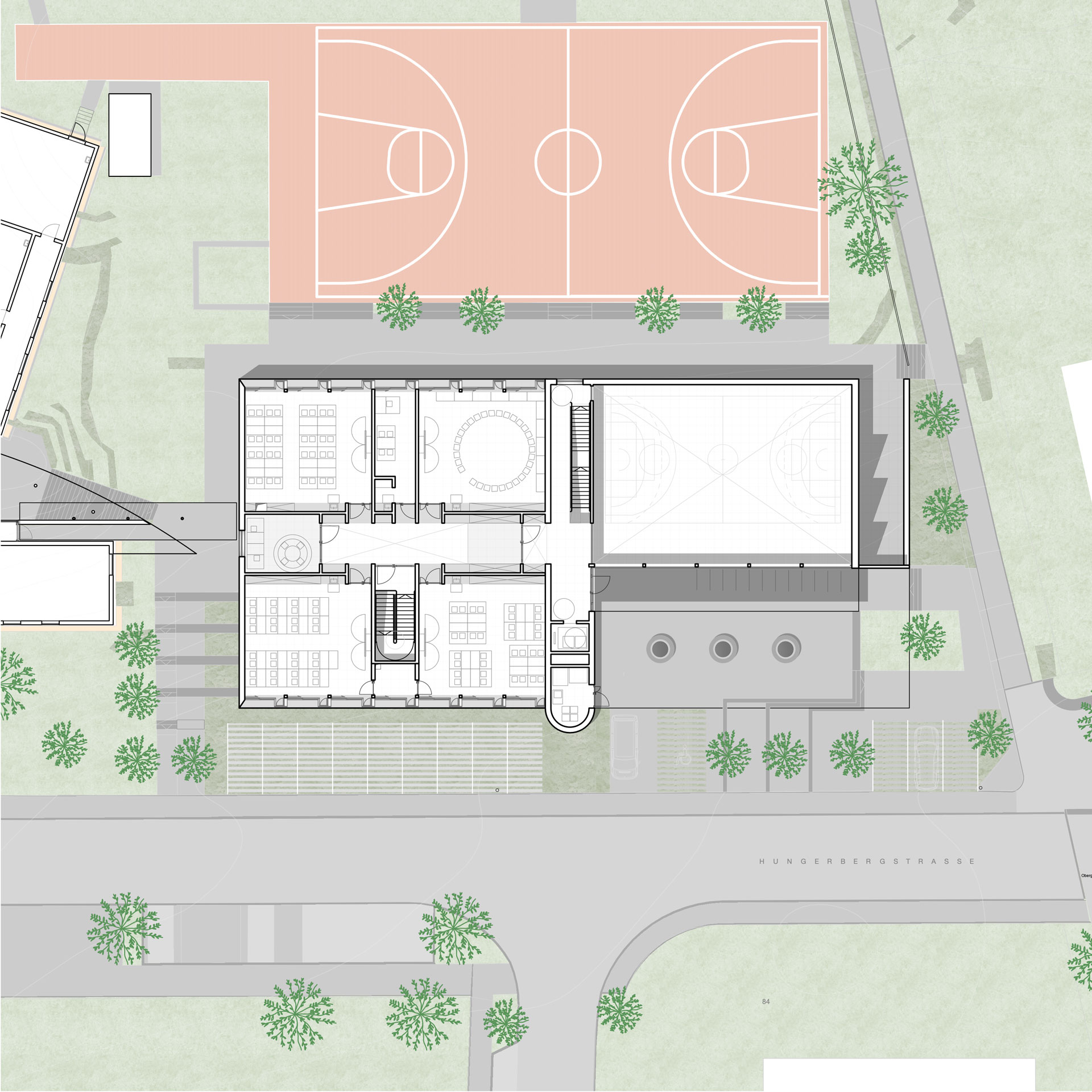New Gymnasium and Cafeteria for the Hungerbergschule, Winnenden, Germany

The building is an important element in the further development to an all-day school. For the new two-story, multifunctional building, a wooden construction is planned for the components that are not in contact with the ground. It has four support rooms and additional offices on the upper floor, while the gymnasium and the cafeteria are located on the lower level. A server room, for which there is no space in the school building, will also be housed in the new building.
Two separate staircases allow parallel use for the school and club sports without any points of contact. Due to the hillside location, the view from Hungerbergstraße makes the building appear as a single-story building only. Access is via the upper floor as well as the first floor.
Transsolar performed thermal simulations of the different zones and determined their fresh air requirements. The main focus was to investigate the potential of natural ventilation for the different areas of use. It was proven that the gym and the support areas can be supplied with sufficient fresh air and that comfort limits can be kept, without mechanical ventilation. Special areas such as the kitchen as well as changing rooms and restrooms will receive mechanical ventilation to counteract odor and moisture developments. In the cafeteria, basic mechanical ventilation will be provided, which will be supplemented by window ventilation.
The building is heated by district heating, as geothermal energy is not possible on site.
On behalf of the city, Transsolar carried out the balancing of CO2 emissions during operation; thus, the CO2 emissions in different variants of operation were determined via thermal simulations. In a simplified form, advice was also given regarding the CO2 emissions of the construction.
To offset the calculated annual ecological footprint of 33 tons of CO2 in operation, large-scale photovoltaics are planned on the roof. The areas are sufficient for the building to achieve CO2-positive status in operation.
If construction begins as planned in 2024, completion is possible in Fall 2026. In the same year, the legal entitlement to all-day care in the first year of primary school will become legally binding.

